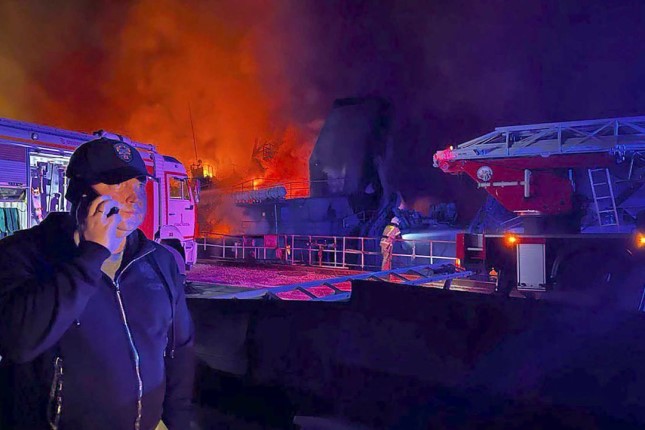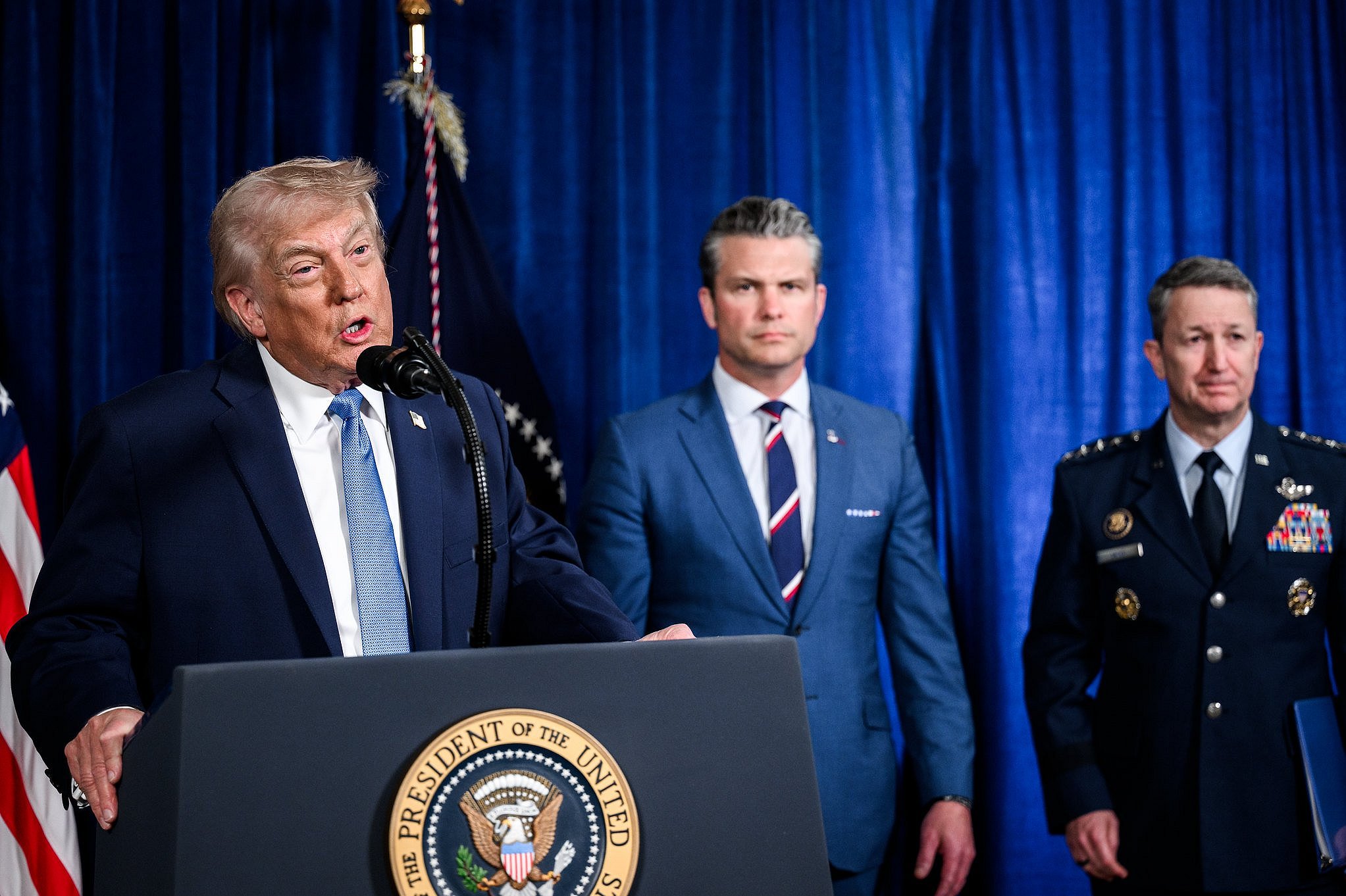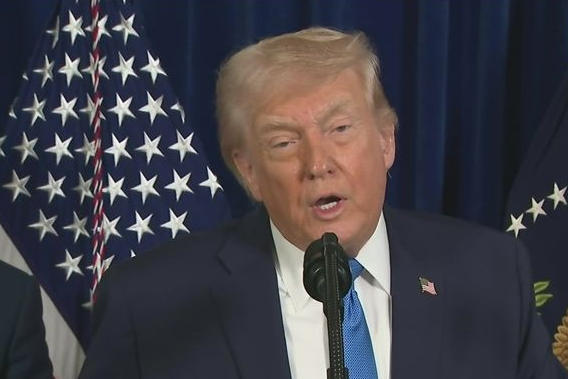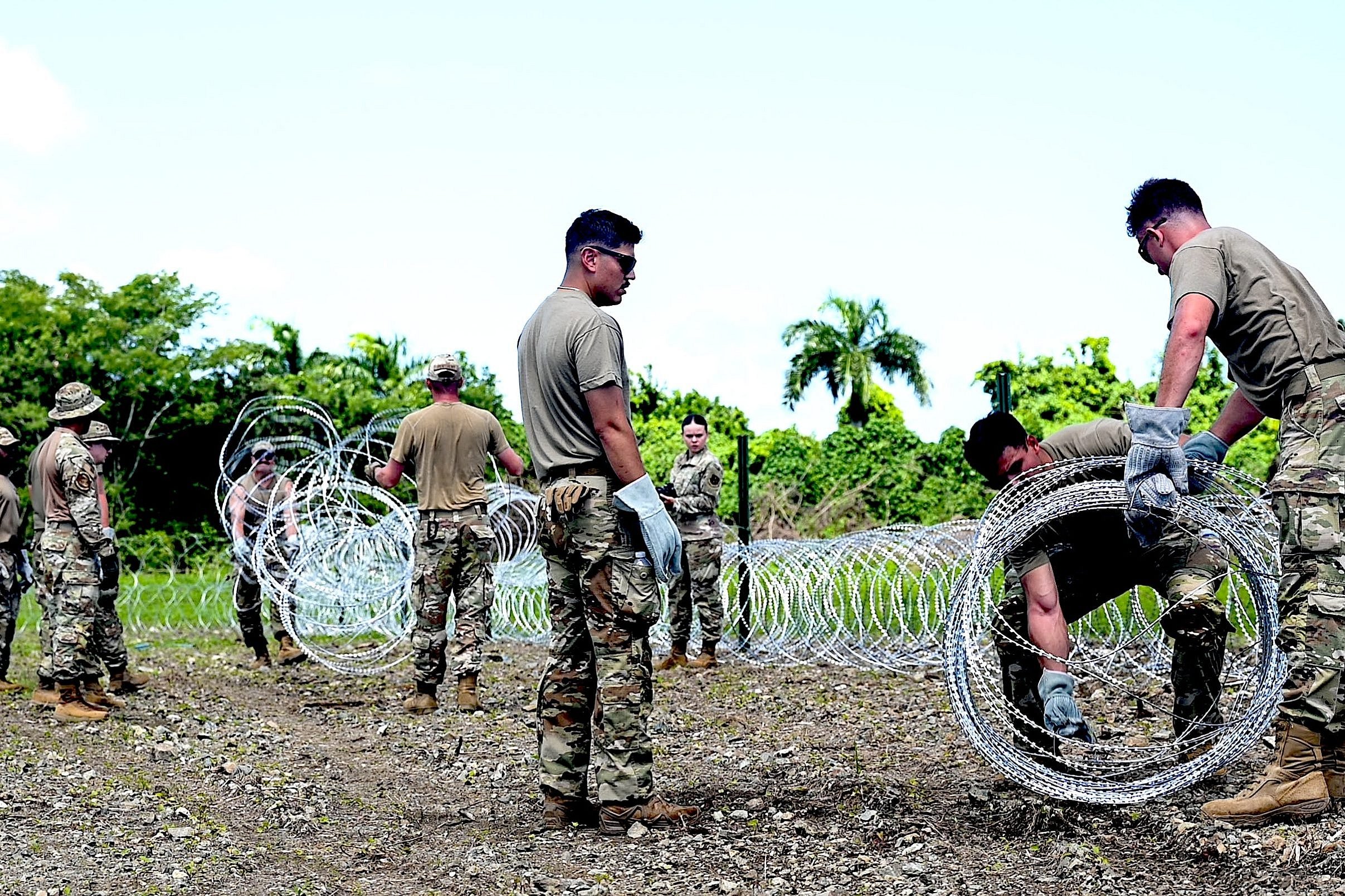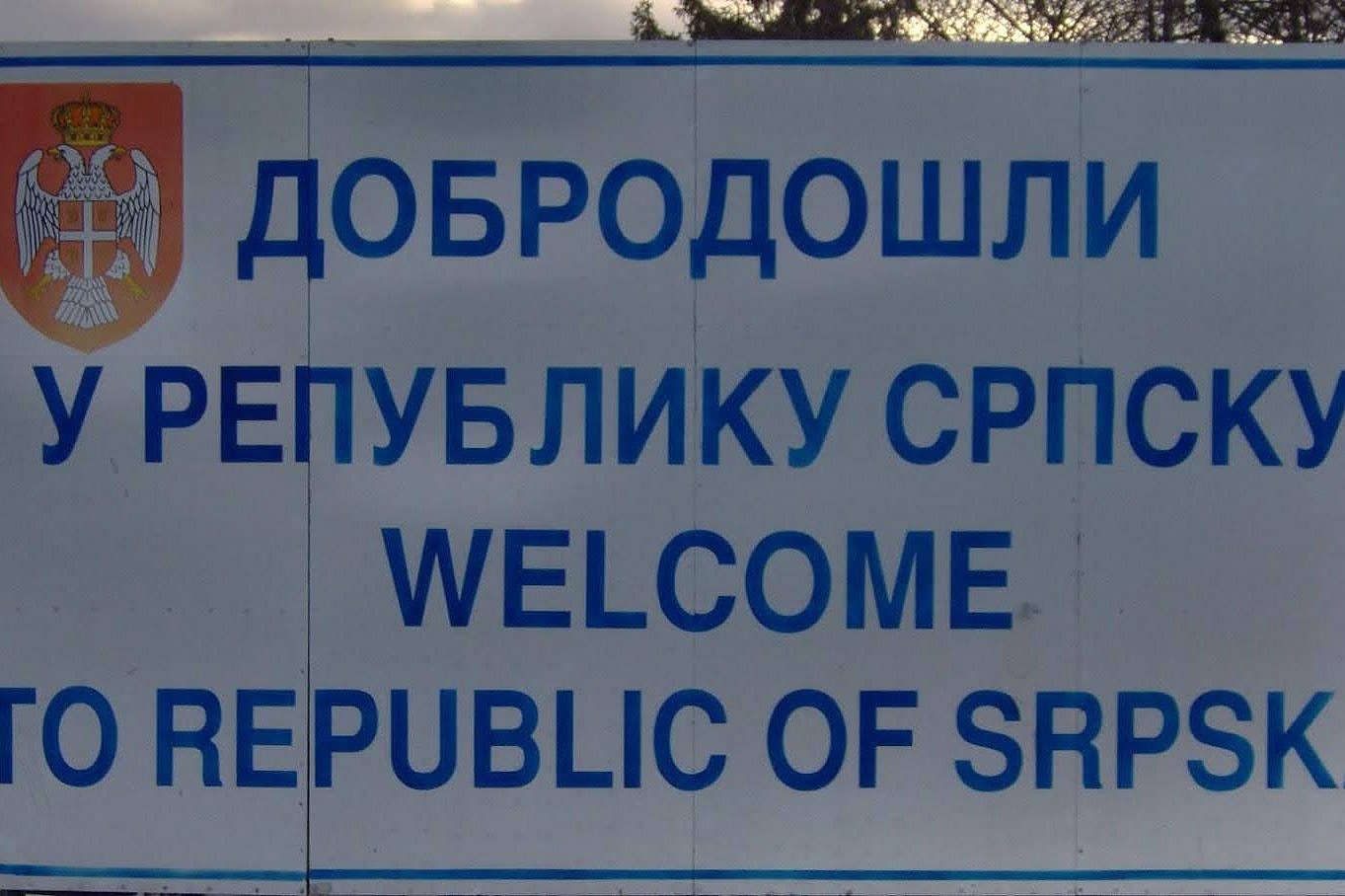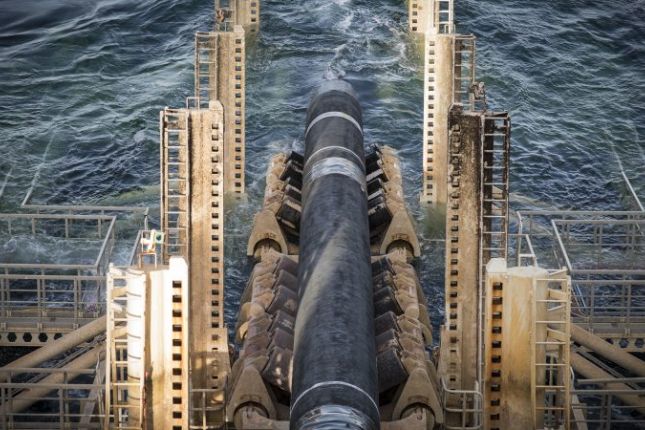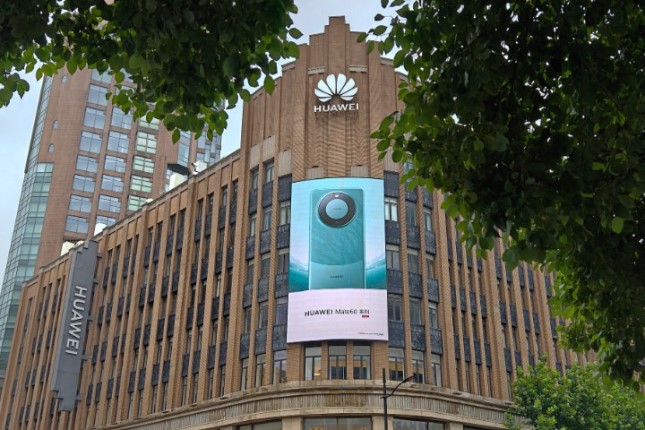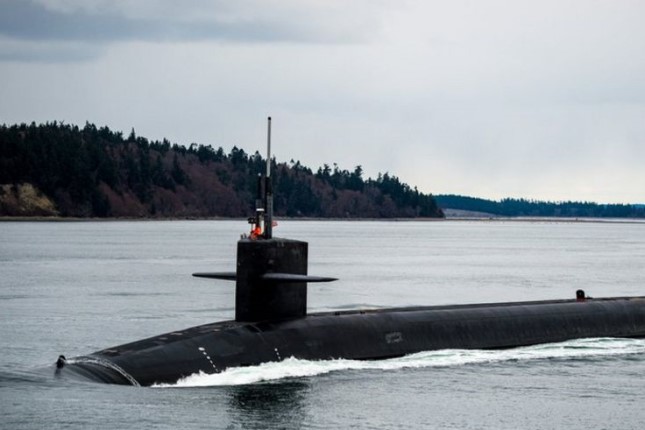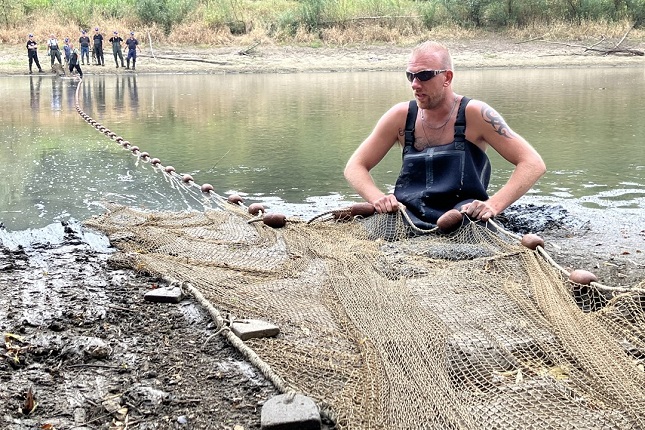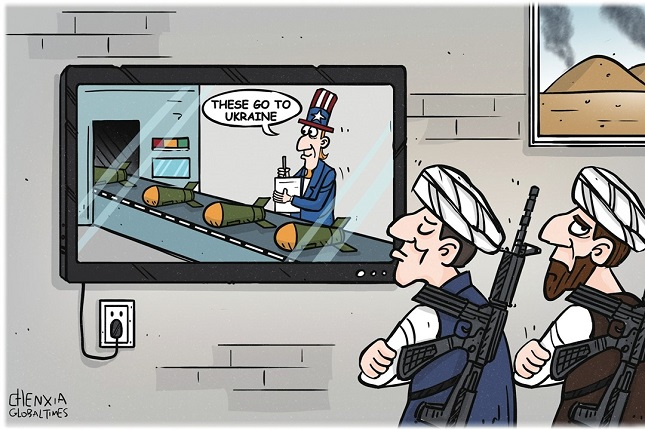Citing an unnamed Ukrainian official, Sky News reported that the strike used Storm Shadow long-range missiles provided by the UK. “It was Storm Shadow,” Sky News quoted one of its sources as saying. Earlier this year, the UK and France provided Ukraine with Storm Shadow missiles, with a range of over 150 miles.
Coming after pledges early in the war by the US and its NATO allies that their weapons would not be used to strike Russian territory, the latest attack demonstrates the extent to which the NATO powers are abandoning many of their prior limitations on their involvement in the war.
Unlike previous strikes on military installations on Crimea, Ukrainian officials openly admitted their responsibility and boasted about the damage that had been inflicted.
“On the morning of Sept. 13 the Ukrainian armed forces conducted successful strikes on naval assets and port infrastructure of the occupiers at the docks of temporarily occupied Sevastopol,” the Ukrainian Defense Ministry said on Telegram.
Lieutenant General Mykola Oleschuk, the head of the Ukrainian Air Force, posted an image of a burning Russian warship on Telegram, adding the caption “And while the occupiers are ‘storming’ and they are still recovering from the [explosions] in Sevastopol, thank you to the pilots of the Air Force of the Armed Forces of Ukraine for their excellent combat work!”
“We confirm a large landing vessel and submarine were hit,” Andriy Yusov, a Ukrainian military intelligence official, told Reuters.
In a subsequent statement to Ukrainian national television, Yusov added, “Those are significant damages. We can now say that with a high probability they are not subject to restoration.”
Mikhail Razvozhaev, the governor of Sevastopol, wrote on Telegram that 24 people were injured in the strike. The destroyed vessels had been identified by military analysts as a Project 636.3 diesel submarine and a Project 775 Ropucha-class large landing ship. Both ships were in dry dock undergoing repairs at the time. It was the first known successful attack on a Russian submarine of the war so far.
Last year, Ukraine destroyed the Moskva, the flagship of Russia’s Black Sea Fleet.
In recent months, Ukrainian forces have regularly carried out attacks hundreds of miles behind Russian lines, including multiple attacks on the Russian capital city of Moscow.
The Financial Times quoted Ukrainian Lieutenant General Kyrylo Budanov, the head of Ukraine’s military intelligence, boasting about the consistent strikes inside Russia. “It has a sobering effect,” he said. “We see some slight moves—panic moves—for example, Russian insurance companies providing insurance against civilian attacks.”
He continued, “As a result, much more money is being traded between insurance companies and airlines. These problems will mount up and affect people—we hope there will be kitchen conversations about that.”
In May, two drones exploded over the official residence of Russian President Vladimir Putin, which the Kremlin called an assassination attempt.
At the time, US Secretary of State Antony Blinken was asked whether the US would disavow attempted assassinations of Russian officials, Blinken refused to do so, declaring, “These are decisions for Ukraine to make about how it’s going to defend itself, how it’s going to get its territory back, how it’s going to restore its territorial integrity and its sovereignty.”
That same month, the Ukrainian military carried out a suicide drone attack on the Kerch Bridge linking Crimea to the Russian mainland.
In July of this year, Ukrainian suicide drones attacked Moscow’s central business district, damaging the facades of two office buildings.
In February, US Under Secretary of State Victoria Nuland gave a public green light for Ukrainian attacks on Crimea. “Those are legitimate targets,” Nuland said, referring to Ukrainian strikes on Crimea. “Ukraine is hitting them. We are supporting that.” Last year, the US gave private authorization for strikes inside Russian territory, according to The Times of London.
Earlier this week, Reuters reported that the United States is preparing to approve the sending of long-range ATACMS missiles, capable of striking hundreds of miles behind Russian lines and putting the capital city at risk of attack.
These moves follow what was widely seen as an embarrassing setback for the United States at the G20 Summit in India, which failed to adopt language demanded by the US and its allies condemning Russia for the Ukraine war.
This took place in the context of the failure of Ukraine’s “Spring offensive” which, despite the loss of tens of thousands of lives, has made no significant progress in recapturing Russian-held territory.
Under conditions in which the extent of Ukraine’s military debacle is becoming clear, the US and its NATO allies are increasingly removing whatever restrictions on Kiev’s military actions remain and more and more openly encouraging it to use long-range Western weapons to strike inside Russia.
Photo: Governor of Sevastopol Mikhail Razvozhaev speaks on a mobile phone as smoke and flames rise from a burning Sevastopol shipyard in Crimea © Sevastopol Governor Mikhail Razvozhaev telegram channel via AP.
Source: World Socialist Web Site.
